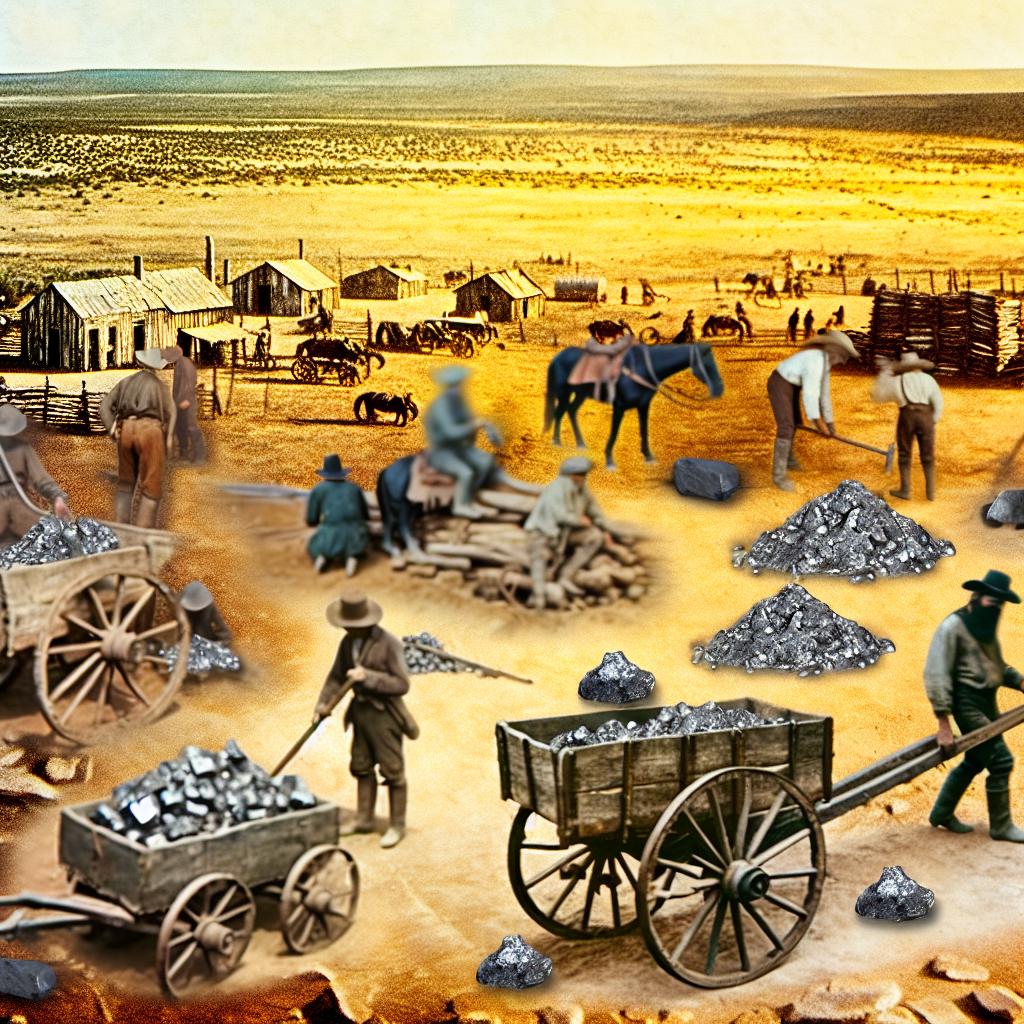The Genesis of the Texas Silver Rush
The Texas Silver Rush of the 19th century marks a fascinating period in American history, set against the backdrop of the broader westward expansion. While the California Gold Rush often overshadows this event, the silver discovery in Texas played a significant role in shaping the region’s development. The initial discovery was made in the mid-19th century, bringing a wave of prospectors and entrepreneurs eager to capitalize on the newfound resource. This silver craze represented both the hopes and struggles that characterized the westward expansion of the United States.
Discovery and Initial Exploitation
Silver mining began in earnest following the discovery of silver deposits in Texas, particularly in the Trans-Pecos region. This region, known for its rugged and challenging terrain, attracted miners willing to brave harsh conditions for the promise of wealth. While the primary goal was to extract silver, other minerals like lead and zinc were also found, adding to the commercial allure of the area. The discovery were met with swift responses from various stakeholders, not just the miners. Speculators, financiers, and industrialists saw an opportunity to invest and potentially realize substantial returns on their investments.
The initial phase of exploitation saw a rudimentary approach to mining. With limited technology and experience, miners depended heavily on manual labor and basic tools. Despite these primitive methods, the spirit of adventure and the allure of potential riches drove this phase forward. The social landscape of this time was characterized by a mix of hope and perseverance, underscored by an acceptance of the inherent risks and challenges.
Impact on Local Communities
The influx of miners led to the rapid establishment of mining towns, transforming the economic landscape. These communities emerged almost overnight, complete with saloons, general stores, and other businesses catering to the needs of miners. These bustling towns became microcosms of economic activity, reflecting a dynamic period where supply and demand dictated the rhythm of life. Storekeepers, blacksmiths, tailors, and other merchants found a ready market in the burgeoning population of miners.
The demand for supplies and infrastructure created opportunities for entrepreneurs and laborers from various sectors, thus contributing to population growth and economic diversification. The mining towns themselves became melting pots of culture and commerce, bringing together people from different backgrounds and fostering an environment in which new ideas and practices could flourish. With the constant need for housing, transportation networks, and other infrastructural elements, the economic ripple effects were felt well beyond the immediate vicinity of the mines.
Cultural and Environmental Consequences
As with many resource rushes, the rapid development brought cultural and environmental repercussions. The cultural impact included a blend of different traditions as people from across the United States and from other countries converged in Texas. This convergence led to a unique cultural amalgamation, where diverse ethnic and cultural groups interacted, influencing one another in various aspects of life.
Simultaneously, mining operations often disrupted local ecosystems, leading to long-lasting environmental damage. As techniques improved, the deeper layers of ore were accessed, but at significant ecological cost. The extraction process often resulted in deforestation, soil erosion, and water pollution. Wildlife habitats were altered or destroyed, impacting biodiversity in these regions. The environmental consequences extended beyond immediate geographic boundaries, adversely affecting surrounding ecosystems and communities who were dependent on natural resources.
The Decline of Silver Mining in Texas
By the late 19th and early 20th centuries, the Texas silver boom began to wane. Several factors contributed to this decline, including the depletion of easily accessible ore, falling silver prices, and the transition to more lucrative mining operations elsewhere. As miners exhausted the most accessible veins of silver, the cost of extraction increased, forcing miners to seek better opportunities elsewhere. The global economic climate also played a role, with fluctuating silver prices impacting the profitability of mining operations.
Additionally, technological advancements made it easier to mine less accessible deposits, making other regions more attractive. As technology advanced, mines in other areas of the United States and around the world became more economically viable, and the focus shifted away from Texas. Despite attempts to prolong the life of the mining industry in the region through improved technology and methods, the inevitable decline set in.
Legacy of the Texas Silver Rush
While its prominence was short-lived, the Texas Silver Rush had a lasting impact on the region. It played a crucial role in the economic and demographic development of Texas, paving the way for future growth in other sectors like oil and agriculture. The experience gained from mining operations proved invaluable as Texas transitioned into other industries. Lessons learned during this period helped shape the technological and strategic approaches adopted in subsequent ventures.
Moreover, the social and cultural dynamics established during the Texas Silver Rush continued to influence the region’s development. The remnants of mining towns and old mines serve as historical reminders of this vibrant period. These vestiges stand as monuments to the ambition and industriousness characteristic of this era, offering contemporary observers insight into a pivotal chapter in Texas’s history.
For more detailed information on historical mining impacts, you can refer to resources such as the Library of Congress which house extensive archives on these events. The records available provide a broader understanding of how mining shaped societies and landscapes, offering valuable perspectives on this transformative time in American history.


